#1993
Junkyard Find: 1993 Nissan Sentra with 320,165 miles
When I'm sniffing around in car graveyards and I find a discarded Toyota or Honda with between 300,000 and 400,000 miles, I won't photograph it unless there's something interesting about it beyond just the odometer reading. With Nissan machinery, however, the bar is lower; today's Junkyard Find should make both Yokohama and Smyrna proud.
Junkyard Find: 1993 Nissan Stanza Altima GXE
Over the last couple of decades, the Nissan Altima has become the butt of countless online jokes and is now generally considered the most wretchedly disposable of US-market motor vehicles. We can assume that this is the result of so many years of ex-fleet Altimas being dumped into the market after full depreciation, coupled with a general sense of utter dysfunction in Nissan HQ. In any case, the Altima is an icon now, and I've spent years trying to find a first-year example in the car graveyards I frequent. Finally, in a Denver-area boneyard, I found this battered '93 GXE sedan.
Junkyard Treasure: 1993 Mercury Grand Marquis LS
Ford introduced a newly rounded Crown Victoria on the late-1970s-vintage Panther platform for the 1992 model year, and the Mercury Division was right there—as it so often was, from the very beginning in 1939—with a Mercurized version. The 1992-1997 Grand Marquis has become a rarity in the big self-service car graveyards I frequent, so I decided that this worn-out '93 deserved to be documented for this series.
Junkyard Find: 1993 Mazda MX-5 Miata
The Mazda Miata has been with us for well over three decades, becoming the best-selling two-seat sports car in history along the way. Miatas were popular as quasi-sensible commuter cars in North America well into our current century, which means that I should have been seeing at least a couple in every junkyard I’ve visited for at least the last 15 years. In fact, I still see many more discarded MGBs and Fiat 124 Sport Spiders than I do Miatas, so this reasonably intact ’93 in Crystal White paint caught my attention immediately (naturally, there was an ’81 Fiat Spider 2000 a few rows away).
Junkyard Find: 1993 Honda Civic LX Sedan With 351,119 Miles
Junkyard Find: A 1993 Honda Civic DX Sedan With 323,486 Miles
Junkyard Treasure: 1993 Geo Tracker, Illinois Rust Edition
Junkyard Find: 1993 Volvo 240 Wagon
Volvo made the beloved 240 for 19 model years, 1975 through 1993, and the car didn’t change much during that period. By the early 1990s, Volvo had “replaced” the increasingly dated-looking 240 three times, with the 740, 940, and 850, but plenty of buyers were still choosing the ancient brick over the more modern iron. It had to end at some point, though, and 1993 was the last year for these cars.
Here’s a very clean, very high-mile ’93 wagon in a Denver-area self-service yard.
Junkyard Find: 1993 Isuzu Amigo
Junkyard Find: 1993 Dodge Colt Coupe
Chrysler began importing Mitsubishi Colt Galants for the 1971 model year, and Mitsubishis bearing Dodge (or Plymouth) Colt badging streamed across the Pacific Ocean and into American dealerships for the following 23 years.
I spotted this vibrantly decorated ’93 model in a Phoenix self-serve yard earlier this month.
Junkyard Find: 1993 Plymouth Voyager With Five-Speed Manual
The original K-platform-based Chrysler minivans, built for the 1984 through 1995 model years, sold like mad, helped kill the station wagon, and forced the competition to get serious about selling minivans in the United States. Buyers could get the 1984-95 four-cylinder Caravan, Voyager, or Town & Country with a five-speed manual transmission, though few did.
Here’s the first 5-speed second-generation Chrysler minivan I have ever found in a wrecking yard.
Junkyard Find: 1993 Jeep Cherokee, Pink Camouflage Edition
Examples of the XJ Jeep Cherokee are everywhere in Denver junkyards (nearly as numerous as late-1990s Subaru Outbacks, these days), and it takes a special one to make me deploy my camera. I thought the factory-installed orange tape stripes on this ’91 Cherokee Sport were interesting, and now today’s ’93 with innovative tree-branches-and-rattlecans camo job has made the cut.
Junkyard Find: 1993 Mitsubishi Diamante Station Wagon
1993 wasn’t a great year for the station wagon in the American marketplace; the final Volvo 245 came out that year, minivans and SUVs were kicking hell out of wagon sales as families decided that each child required a thousand pounds and/or 150 cubic feet of gear for any trip, and nobody seemed aware that wagon versions of everything from the Sable to the Camry were available for sale.
It’s easy to forget that the not-so-hot-selling Diamante had an even slower-selling wagon version back then, but I was reminded by the sight of this one in a Northern California wrecking yard.
Junkyard Find: 1993 Chevrolet Lumina Euro
By the 1980s, Japanese carmakers had established themselves as making the most reliable vehicles in the minds of plenty of American car shoppers. Meanwhile, the Europeans had conquered much of the sporty/sophisticated market by that time. General Motors responded by stamping out millions of plastic badges with the magical letters “E-U-R-O” molded in (as well as by doing stuff like putting pushrod front-drive V8s in bodies flown over from Italy). You could get a Chevy Celebrity Eurosport, and— a few years later— a Chevy Lumina Euro. I’ve been overlooking these cars in junkyards for many years, but now I realize that they have a certain historical significance. Here’s one I spotted in Denver.
Junkyard Find: 1993 Nissan NX1600
The Nissan NX was never much of a big seller in the United States, and only the first-cousin-of-the- Sentra-SE-R NX2000 gets any attention from potential diamond-in-the-rough rescuers today. That means that you won’t see many of these cars in the wrecking yards, so I decided to photograph this purple-duct-tape-customized example in a Denver yard a couple months back.



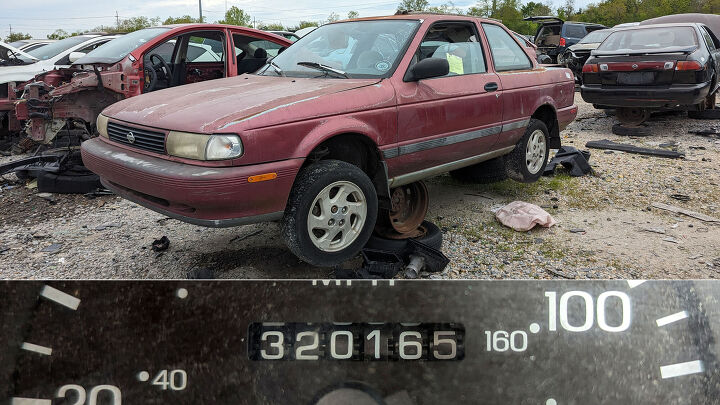
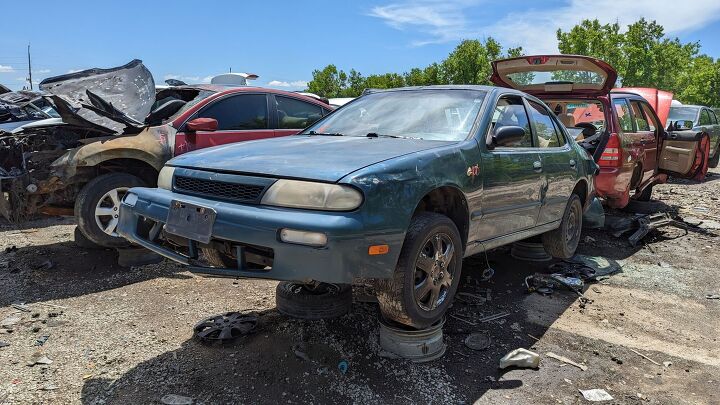


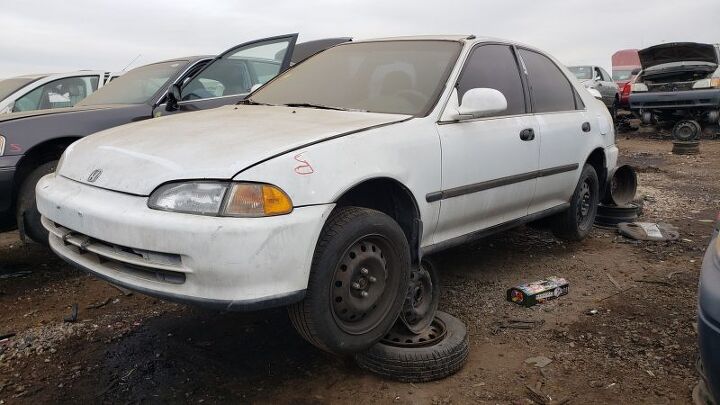
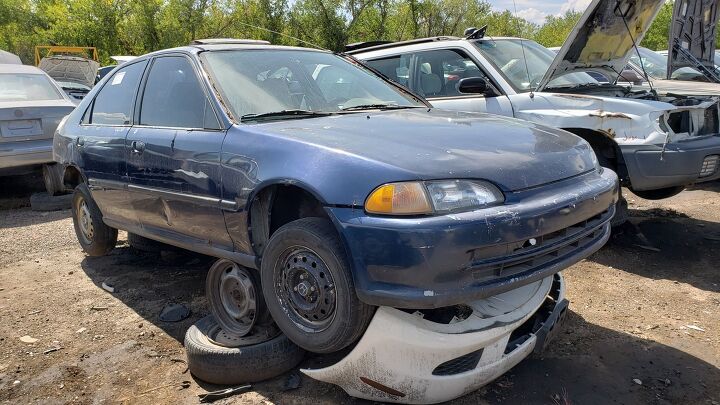



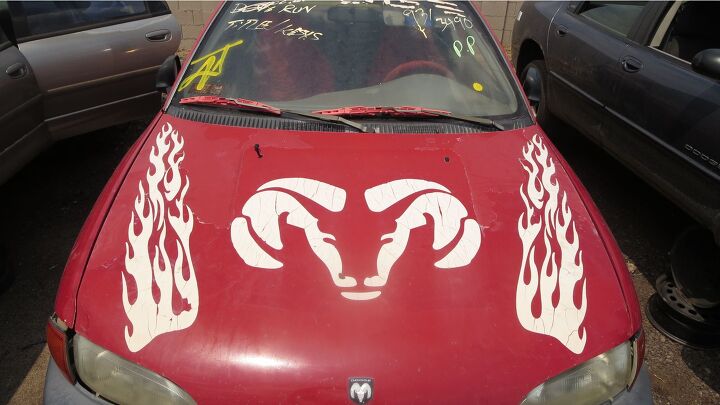

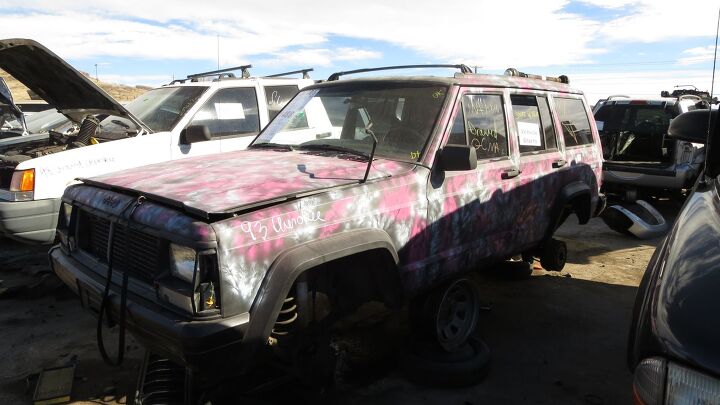


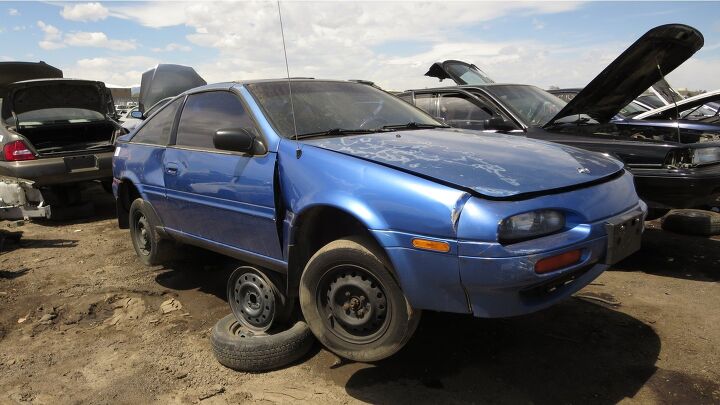












Recent Comments